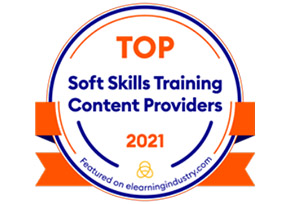Home :: Continuous Learning ::
Social Learning
Build Learning Communities by Leveraging Our Social Learning Expertise

As the learning landscape evolves, businesses are searching for novel strategies to enhance the skills and agility of their workforce. Social Learning has proven to be an effective tool for corporate training. It fosters collaboration and encourages learner participation.
Supporting a Social Learning environment at work has the major advantage of empowering individuals to take charge of their own learning. It appeals to learners of all profiles and generates a greater impact mainly because learning through collaboration accelerates the learning process and can be applied to more productive work. It can be also used to facilitate both Formal and Informal Learning.
The EI Approach to Social Learning

EI believes that Social Learning requires a more structured approach that can foster teamwork on any given platform. This can be used to not just communicate information but also to establish motivated teams that collaborate, advertise, and keep adding to the knowledge base for its healthy growth and development. We recommend a combination of strategies for this. For employee training, a fundamental strategy that can be utilized is Informal Social Learning. This works by introducing a variety of social media components, such as blogs, podcasts, video links, wikis, and so on. Another strategy entails Semi-structured Social Learning. We assist our clients in choosing projects that foster participation and have common goals in order to fully utilize the benefits of Social Learning. Discussions, sharing, curating, communities of practice, and expert panels are a few of the strategies that we also recommended.
EI's Best Practices for Optimizing Social Learning at the Workplace
Here are the key strategies we offer:

Create Forums: Establish forums for training guidance on how to tackle challenges.

Encourage Interaction: Encourage participants to discuss their learnings and their interests and promote knowledge sharing.

Content Curation: Encourage curation of learner-created Microlearning assets.

Effectiveness of Microlearning Nuggets: Encourage learners to provide feedback on their Microlearning experiences. Learners can discuss concepts they found most useful and how they implemented them on the job.

Gamification: Gamification and Social Learning go hand in hand as it stimulates competition, incorporates an enjoyable element, and is aligned with specific learning outcomes.

Microlearning Videos: Microlearning Videos are becoming an increasingly effective Social Learning tool, as they offer rapid development options and effectively supplement Formal Training.
- Banking, Financial Services, and Insurance
- Healthcare, Medical Devices, and Pharmaceuticals
- Retail and Consumer Goods
- Government Agencies and Non-Profits
- Manufacturing and Logistics
- Media and Entertainment
- Airlines, Aviation, and Aerospace
- Beverage and Tobacco
- Automotive Sector
- Sales Training
- Compliance Training
- Induction and Onboarding Training
- Leadership Training
- Professional Skills Training
- Product Training
- Soft Skills Training

Ranked #1 in the Top Soft Skills Training Providers in 2021

Best Competencies and Skill Development
Case Studies

How a Manufacturing Company Transitioned from Face-to-face Training to Virtual Learning and Improved Learner Engagement and Efficiency

How a Large Entertainment and Theme Park Chain Improved Sales and Customer Service with Next Gen eLearning

How a Manufacturing Company Improved Workforce Efficiency and Cost Savings with a Learning in the Moment of Need Solution